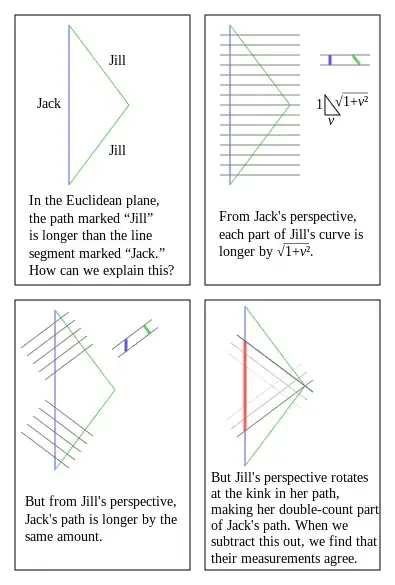There is indeed a space-like analogue to the twin paradox. As @robphy mentions, it is the triangle inequality; but it is worth looking at this in a bit more detail. Here's a picture to illustrate it (due originally to Ben Rudiak-Gould and from Wikipedia):

Suppose Jack travels directly from A to C, whereas Jill goes from A to B to C. From Jack's perspective, for each meter forward he travels, Jill travels a longer distance. That is, if $\theta$ is the angle between their paths, Jill travels $\frac{1}{\cos\theta}$ meters forward for each meter forward Jack travels (in the figure we have $\cos\theta = \frac{1}{\sqrt{1+v^2}}$).
But this is entirely symmetric -- that is, from Jill's point of view (using coordinates that are perpendicular to Jill's line of travel) it is Jack who travels more distance for each meter Jill moves forward. If you think of them as being in cars, each sees the other as "behind" them, at least during the initial phase of their journey.
There's no contradiction here: they are measuring different things, since each uses lines perpendicular to their own direction of travel.
So why does everyone agree Jill is the one who has traveled further when they reunite? It is because Jill turned -- she's actually using two different sets of perpendicular lines as her measurements, one set for her outbound journey and one for her inbound journey. These sets overlap, and so when she calculates Jack's total distance she has to subtract the overlap.
The usual twin paradox is basically the same, but using Minkowski spacetime instead of ordinary Euclidean space. Time has the "opposite sign" from space, so instead of Jill having a longer total distance elapsed she has a shorter total time eleapsed. Everyone agrees that Jill is the one who turned around, because in order to do this she accelerated (which is physically detectable)
